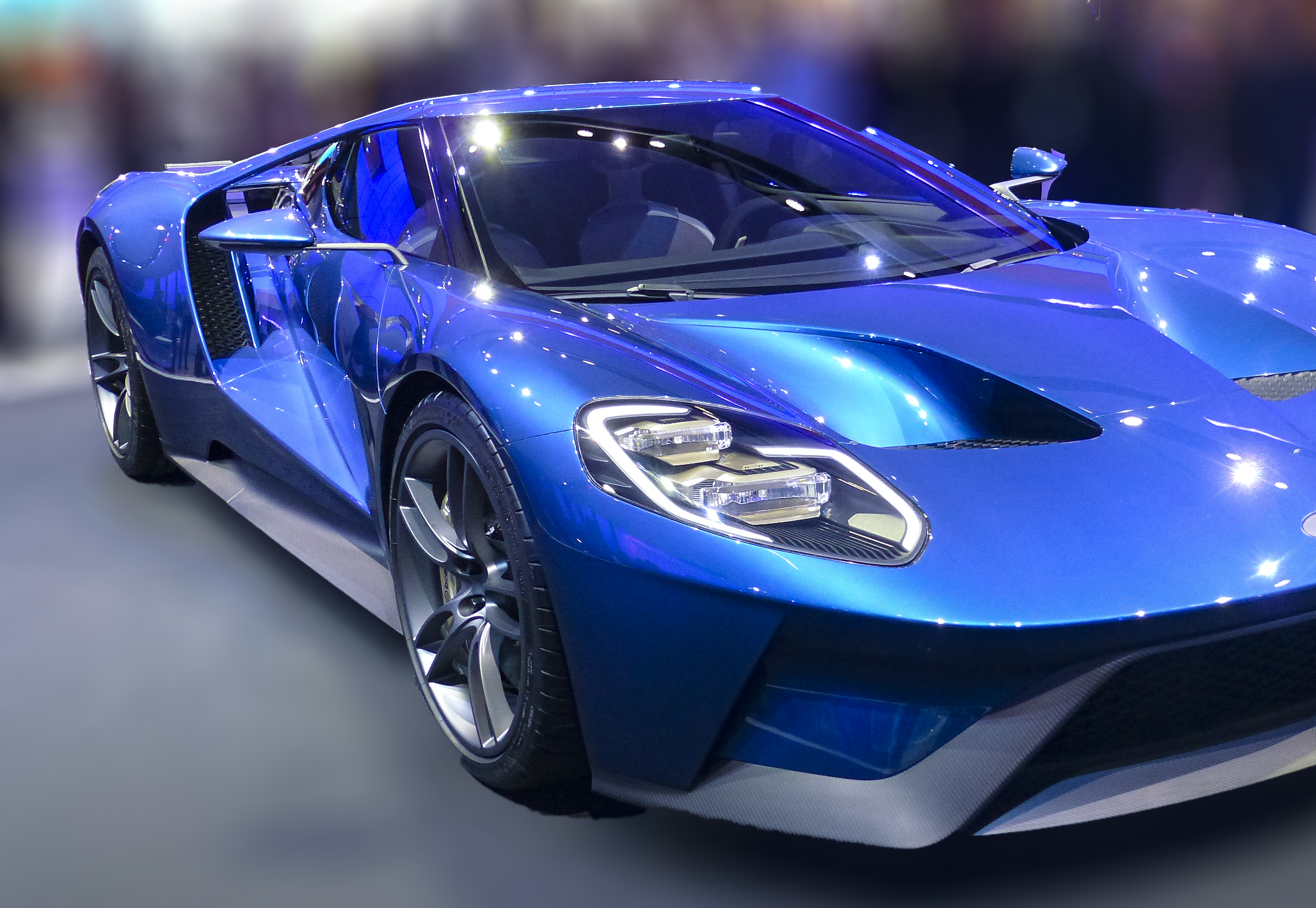Plastics are crucial to vehicle exteriors. Lights, bumpers, hoods, liftgates, trim, it’s all right there for you to see. Plastics resist extreme weather while helping reduce emissions, improve safety and increase savings at the pump.
Exterior Lights
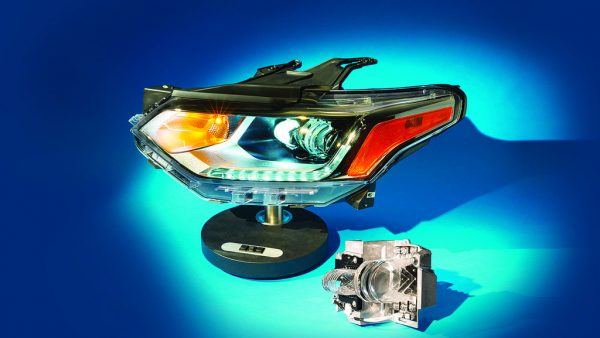 Automotive lighting keeps our families safer. In a moment, drivers must gauge a vehicle’s position, size, and direction of travel. Pedestrian visibility and safety depend on lights.
Automotive lighting keeps our families safer. In a moment, drivers must gauge a vehicle’s position, size, and direction of travel. Pedestrian visibility and safety depend on lights.
Today’s bright plastic LEDs broadcast light much further. That distance gives drivers more time to react. Plus plastic lighting solutions can provide a head-turning display of chic color and curb appeal. Perhaps one-day entire luminescent body panels will display artwork all over the surface of a car.
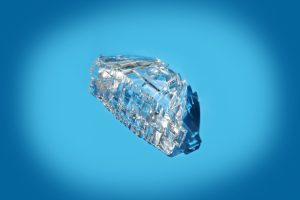 Adaptive headlights rotate with the vehicle which lights up more of the road surface, improving a driver’s sight distance at night. A study by the Insurance Institute for Highway Safety found that vehicles with adaptive headlights were involved in 10% fewer accidents.
Adaptive headlights rotate with the vehicle which lights up more of the road surface, improving a driver’s sight distance at night. A study by the Insurance Institute for Highway Safety found that vehicles with adaptive headlights were involved in 10% fewer accidents.
The headlamp light curtain on the 2016 Cadillac CT6 is another lighting innovation made possible with plastic. The lamp appears clear when unlit but has a glowing appearance when lit. The light scattering properties of the new material convert the light guide to an illuminated panel, which can be used with any color LED, opening a new degree of freedom for designers. Safety is enhanced as there is better visibility due to a larger illuminated surface easier to detect with the human eye.
The 2015 Dodge Challenger rear plastic lamp has an innovative lit/unlit appearance. The system uses high specular and diffuse reflection from multiple LEDs to create a homogeneous light glow.
Bumpers
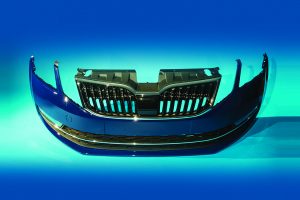 Front and rear plastic bumpers protect and save lives. They have evolved into complex, beautiful, engineered components. Today’s plastic auto bumpers and fascia (front) systems increase design freedom. Plastic engineers can mold the elegant “look” of the vehicle.
Front and rear plastic bumpers protect and save lives. They have evolved into complex, beautiful, engineered components. Today’s plastic auto bumpers and fascia (front) systems increase design freedom. Plastic engineers can mold the elegant “look” of the vehicle.
Thermoplastic olefins (TPOs), polycarbonates, polyesters, polypropylene, polyurethanes, polyamides are the primary resins used. Engineers style plastics for functional purposes in many ways. Plastic bumpers contain reinforcements that allow them to be as impact-resistant as possible.
Some of these plastic products are recyclable. This enables the manufacturer to not only reduce their environmental footprint and reuse scrap material in a cost-effective manner. Today post-industrial recycled TPO performs like virgin resins in many respects. This can potentially rescue millions of pounds of plastics from landfills. And, this reduces material costs during production.
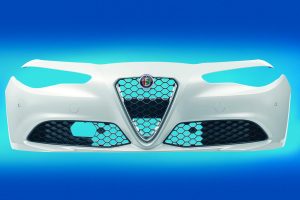 The 2017 Alfa Romeo Guilia features a front bumper design with a computer-controlled active air splitter. During braking or cornering, the front splitter opens to provide a downforce of 220 lb/100 kg for improved handling. The combined system helps the vehicle achieve a low aerodynamic drag coefficient of 0.32. It supports styling with impact and scratch resistance at lower mass and cost.
The 2017 Alfa Romeo Guilia features a front bumper design with a computer-controlled active air splitter. During braking or cornering, the front splitter opens to provide a downforce of 220 lb/100 kg for improved handling. The combined system helps the vehicle achieve a low aerodynamic drag coefficient of 0.32. It supports styling with impact and scratch resistance at lower mass and cost.
The 2011 Fiat Panda added a rear hybrid plastics/steel bumper structure. This structure adds crash-resistance to the chassis while reducing vehicle weight. During impact, crushable plastic honeycombs sequentially collapse absorbing crash energy.
Hoods
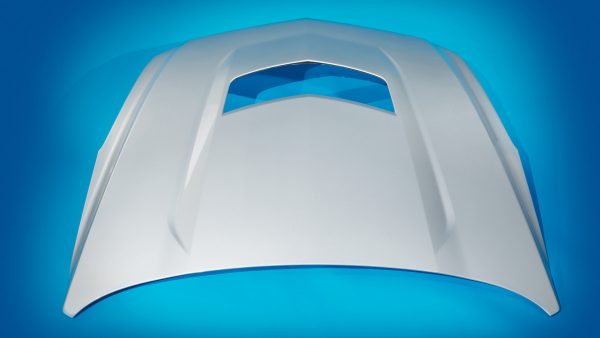
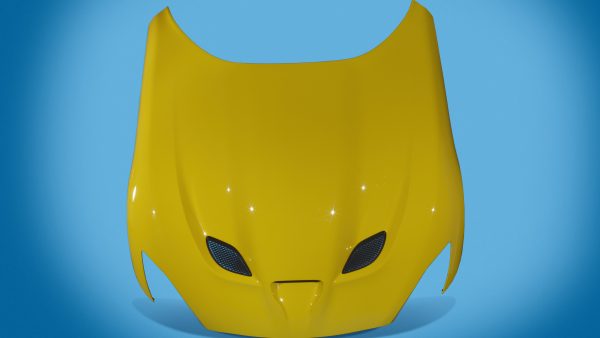
The hood design and shape influence many first impressions of a vehicle. Hoods are a significant place to save weight. They enable design change and aerodynamic improvements. Plastics composites allow complex geometric shapes with deep undercuts. Engineers can add a see-through plastic window while meeting FMVSS frontal crash requirements. And, today’s technologies allow OEMs to duplicate the Class-A color and finish of the rest of the vehicle. Plastics offer all this and sometimes for even less.
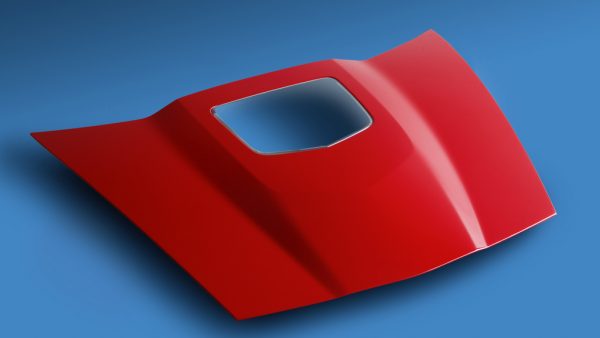
The 2014 Corvette Stingray Sports car hood was the first production use of a new manufacturing process. It utilized the rapid out-of-autoclave manufacturing process for carbon fiber reinforced composites. The process saves money and time, making carbon fiber composites more practical and affordable for high volume vehicle applications. The 2016 Cadillac ATS & CTS take advantage of a compression-molded carbon composite hood utilizing fast-curing epoxy/carbon fiber. The bonded 2-piece hood is 20-30% lighter than aluminum.
Liftgates
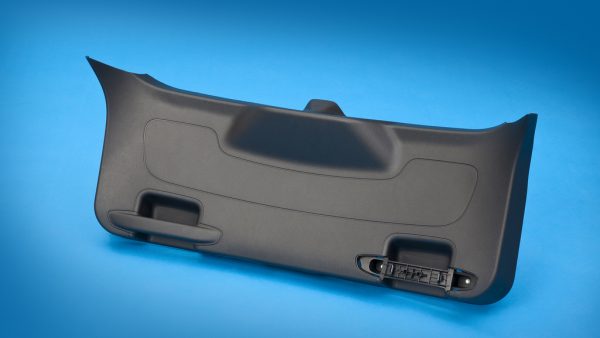
A liftgate is the rear cargo door of today’s SUVs and CUVs. To offer crash protection their structure must be strong. The inside wall must be tough and match the interior. The cargo area takes a beating when cargo shifts, bumps, and scrapes. Plastics resist that damage. They can be designed to match the interior colors and textures and save weight.
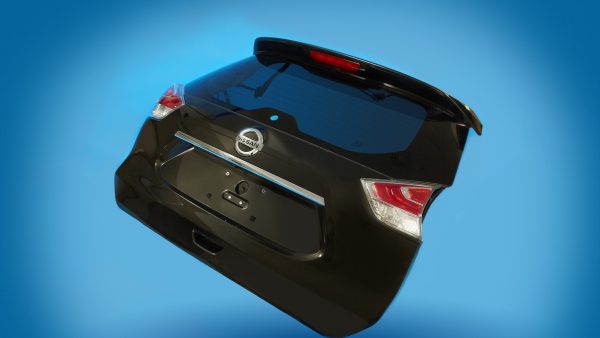
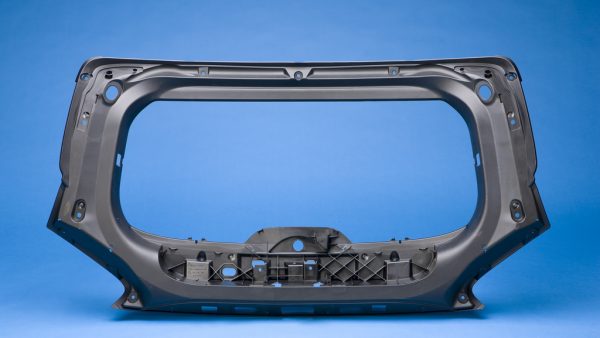 Today plastics can make up a liftgate’s exterior body panel and interior structure. The 2014 Nissan Rogue CUV liftgate is an example. It is 30% lighter than comparable steel systems, improving fuel efficiency by 10%. In addition to the fuel savings, there are other benefits:
Today plastics can make up a liftgate’s exterior body panel and interior structure. The 2014 Nissan Rogue CUV liftgate is an example. It is 30% lighter than comparable steel systems, improving fuel efficiency by 10%. In addition to the fuel savings, there are other benefits:
1) Lower weight can reduce CO2 emissions.
2) A lighter liftgate is easier to open and close.
3) Less upper body weight lowers the center of gravity, improving handling. Polycarbonate plastic windows can reduce weight even more.
Trim
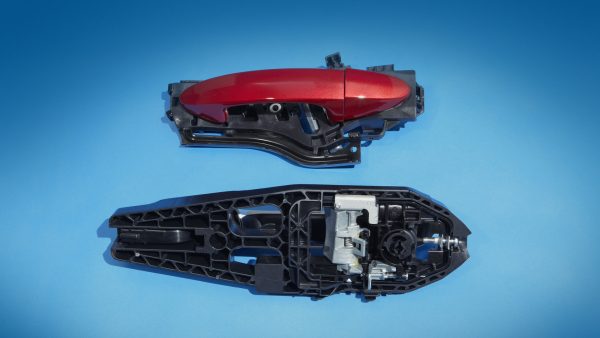
Automotive trim surrounds the vehicle. Trim can be the plastic exterior front grill, rear fascia or a removable hardtop. It can be a plastic truck lid, the roof ditch molding, or a fender. Trim includes sunroof wind deflectors, door handles, truck bed covers, rear-view mirrors, and SUV step assists.
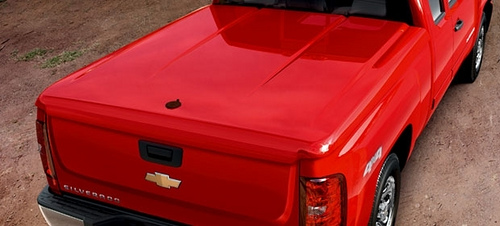
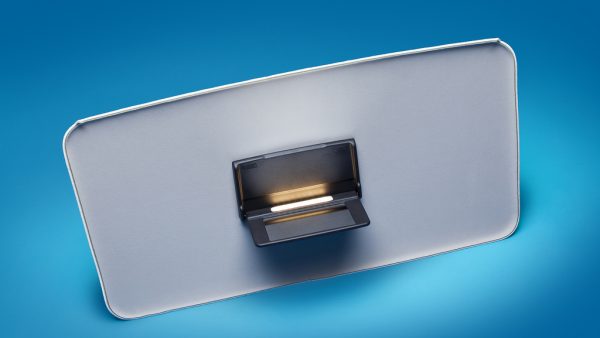
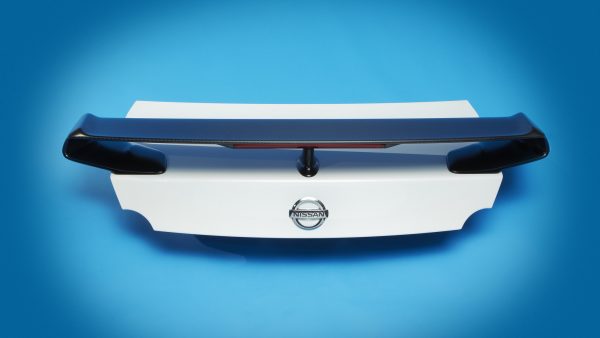 In 2007 alone, 148,658 GMC vehicles used an SUV step assist. Lightweighting this part alone is estimated to reduce emissions equivalent to that of 3,182 commuters’ emissions for one year.
In 2007 alone, 148,658 GMC vehicles used an SUV step assist. Lightweighting this part alone is estimated to reduce emissions equivalent to that of 3,182 commuters’ emissions for one year.
Exterior parts need exceptional UV resistance. Engineers design polymers to perform in extreme temperatures. Chemists build polymers from the molecule up to do the right job for the long-term. Plus many trim pieces reduce weight while adding style and curb appeal.
Stay Up to Date
Sign up to receive our newsletter and get the latest delivered to your inbox.
The Insider's View
Follow our blog for a unique look at how plastics are changing the way we make cars.
Read
